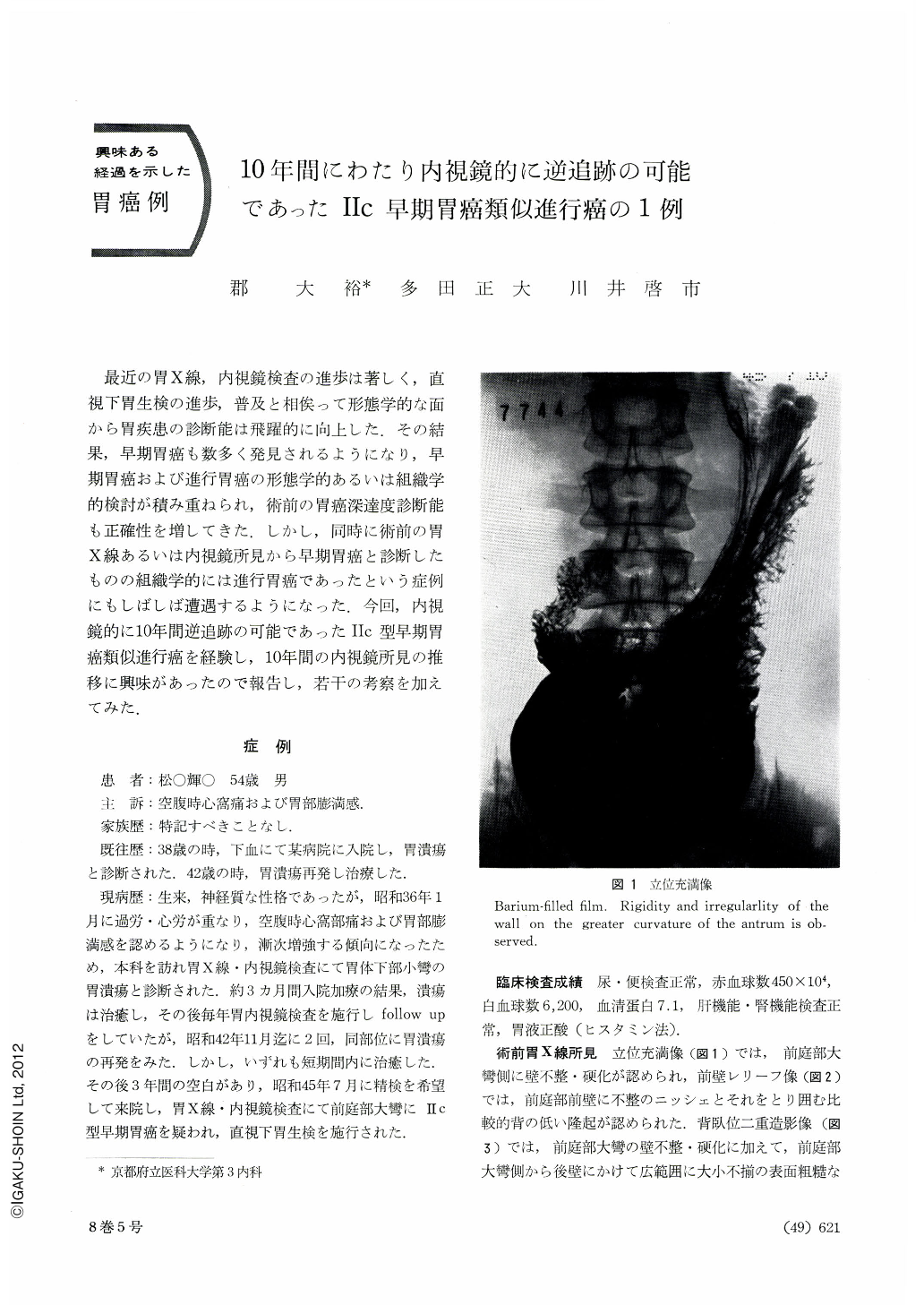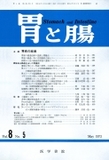Japanese
English
- 有料閲覧
- Abstract 文献概要
- 1ページ目 Look Inside
最近の胃X線,内視鏡検査の進歩は著しく,直視下胃生検の進歩,普及と相侯って形態学的な面から胃疾患の診断能は飛躍的に向上した.その結果,早期胃癌も数多く発見されるようになり,早期胃癌および進行胃癌の形態学的あるいは組織学的検討が積み重ねられ,術前の胃癌深達度診断能も正確性を増してきた.しかし,同時に術前の胃X線あるいは内視鏡所見から早期胃癌と診断したものの組織学的には進行胃癌であったという症例にもしばしば遭遇するようになった.今回,内視鏡的に10年間逆追跡の可能であったⅡc型早期胃癌類似進行癌を経験し,10年間の内視鏡所見の推移に興味があったので報告し,若干の考察を加えてみた.
Recently a case of advanced cancer of the stomach was encountered simulating Ⅱc subtype early one. We were able to trace it endoscopically as far back as ten years before.
X-ray examination of the patient, a man 54 years of age, revealed in erect, barium-filled pictures irregularity and rigidity of the contour of the antrum along the greater curvature. Pictures not only in prone double contrast but also in compression study showed on the greater curvature of the antrum and on the posterior wall an extensive granular areas of uneven size with rough surface. An irregular depression was seen in the center. Concomitant pictures of endoscopy also disclosed on the same location an irregular shallow depression shaped like the figure of 8, dotted with coarse granules of smooth surface having normal highlights. The depressed area was surrounded with granules of relatively low height, in parts forming raised margins due to their fusions. The converging mucosal folds did not exhibit any clubbiness or fusion at the tips.
These findings led us to a preoperative diagnosis of Ⅱc subtype early cancer, the depth of invasion probably localized within the mucosa and at most partially involving the submucosa. Contrary to our expectations, the excised specimen revealed histologi-cally a depressed lesion already in the stage of advanced cancer, though none the less closely resembling those findings that only seen in early cancer.
Retrospective study of endoscopic pictures showed that even in those taken as far back as 9 years and 10 months before the surgical intervention was already seen a pattern of Ⅱc. Since then, up to 3 years and 1 month before the operation, the lesion exhibited hardly any change in size and shape. This fact suggests that the cancer lesion remained within the mucosa all through the time. Our assumption is that depressed types of early gastric cancer are easily influenced by gastric juice and they tend to shed cancer cells in such a great measure as to retain their initial size and shape for a relatively long time. Some as yet unknown factors might have played a great role in the sudden development of cancer nests.

Copyright © 1973, Igaku-Shoin Ltd. All rights reserved.


